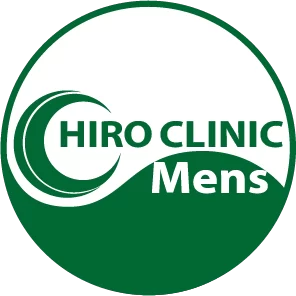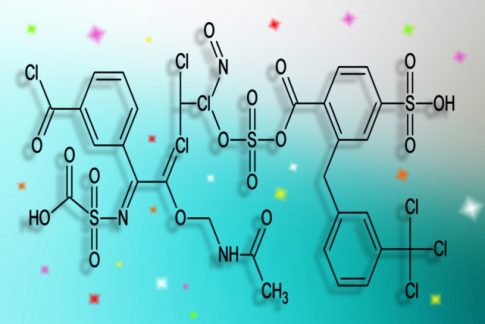Minoxidil is widely used as an effective treatment for many people suffering from thinning hair and hair loss.However, it is not an effective treatment for all alopecia. This article details who minoxidil is suitable for and what precautions should be taken in its use. Understanding the benefits that can be expected from the use of minoxidil and what type of alopecia it is suitable for should make it an effective treatment for thinning hair.
1. AGA (male pattern baldness)
1.1 Mechanism and Characteristics of AGA
Androgenetic Alopecia (AGA) is one of the most common forms of hair loss in men.DHT causes hair follicle shrinkage and shortens the hair growth phase, resulting in thinning and shortening of the hair.
1.2 Role of minoxidil
Minoxidil is one of the most widely used drugs in the treatment of AGA.Its vasodilating properties increase blood flow to hair follicles, thereby promoting the activation of hair matrix cells and aiding hair growth. Clinical trials have confirmed that the use of minoxidil slows the progression of AGA and promotes new hair growth. However, effects vary from person to person, and long-term use is recommended because hair loss often progresses again when use is discontinued.
2. Female Pattern Baldness (FAGA)
2.1 Characteristics of female pattern baldness
Female Androgenetic Alopecia (FAGA), like male pattern baldness, is caused by genetic factors and hormonal imbalance; FAGA is characterized by an overall thinning of the hair, especially on the crown of the head.Unlike male AGA, the frontal hairline is often preserved.
2.2 Effects and Usage of Minoxidil
Minoxidil is also effective for female pattern baldness.A 2% concentration of minoxidil is generally prescribed for women and is particularly effective for thinning hair on the top of the head. Minoxidil acts directly on hair follicles to prolong the hair growth cycle and promote new hair growth. With continued use, it is expected to increase hair density and improve thinning hair.
2.3 Precautions for use specific to women
Minoxidil is effective in women, but there are specific precautions for its use.It is not recommended for use in women who are pregnant or nursing. It is also important to follow the prescribed concentration of minoxidil, as hypertrichosis (an increase in body hair) can occur when women use high concentrations of minoxidil.
3. Alopecia Areata
3.1 Causes and Characteristics of Alopecia Areata
Alopecia areata is an autoimmune disease caused by the immune system mistakenly attacking hair follicles.This results in sudden, localized hair loss. Generally, small circular bald patches appear on the scalp, but in severe cases, hair may fall out all over the body.
3.2 Effects of minoxidil
Minoxidil may also be used to treat alopecia areata, but its effectiveness varies from person to person.Since alopecia areata can recover spontaneously, whether minoxidil directly promotes hair regrowth is a case-by-case basis. However, it is believed that minoxidil increases blood flow to hair follicles, thereby increasing the likelihood that hair loss will recover.
3.3 Other Approaches in the Treatment of Alopecia Areata
In addition to minoxidil, steroid injections and immunotherapy may be used to treat alopecia areata. The choice of treatment is based on the extent and progression of hair loss and the overall health of the patient.
4. Other Alopecia
4.1 Medication-induced Hair Loss
Certain drugs (e.g., chemotherapy drugs and antiepileptic drugs) and hormonal treatments can cause hair loss. In such cases, minoxidil may be used to reactivate hair matrix cells, but the effect depends on the type of drug and the cause of hair loss.
4.2 Hair loss due to nutritional deficiencies or stress
Nutritional deficiencies and severe stress can have a significant impact on hair health. Minoxidil may be used to treat hair loss caused by these factors, but it is important to simultaneously address the underlying causes (improving nutritional deficiencies and managing stress).
4.3 Hair loss due to disease
Hair loss may be caused by certain diseases, such as thyroid disease, diabetes, and autoimmune disorders. In these cases, minoxidil may slow the progression of hair loss, but disease management should be a priority.
5. Cautions when using minoxidil
5.1 Age limit
Minoxidil is a drug generally used for adults (18 years and older). It is generally not recommended for use in minors, as its safety and efficacy have not been fully established. It should also be used under the guidance of a physician when used by the elderly, as it is prone to side effects depending on one’s constitution and health condition.
5.2 Pregnant and Lactating Women
Pregnant and lactating women should avoid the use of minoxidil.The effects of minoxidil on fetuses and infants have not been fully studied, so its use is discouraged to ensure safety. If you suffer from hair loss, it is important to discuss alternative treatments with your physician.
5.3 People with scalp problems
Minoxidil use should be avoided if there is a wound or infection on the scalp.This is because minoxidil may irritate the skin and aggravate existing problems. It is recommended to refrain from use or consult a physician for appropriate treatment until the scalp condition improves.
5.4 Side Effects
Minoxidil has side effects, which have been reported to include itching, dryness, and redness of the scalp.Rarely, systemic effects such as low blood pressure and increased heart rate may also occur. If any of these symptoms occur, use should be discontinued immediately and a physician should be consulted.
5.5 Interactions with other medications
Minoxidil can cause interactions with other medications.It is especially important to consult a physician to ensure safe use if you are taking antihypertensive medications or other hair loss treatments concomitantly.
Summary
Minoxidil is a therapeutic drug that is believed to be effective against certain types of alopecia, such as male pattern baldness and female pattern baldness.However, it is not equally effective for all people, and there are individual differences. In addition, it often takes several months before the effects are felt, so continuous use is required. Furthermore, there are several precautions for use, including age, health conditions, and interactions with other medications, so use appropriately under the guidance of a physician. At HIRO CLINIC, we provide thorough counseling and treatment by physicians who are familiar with AGA treatment. Please feel free to contact us if you have any concerns.










